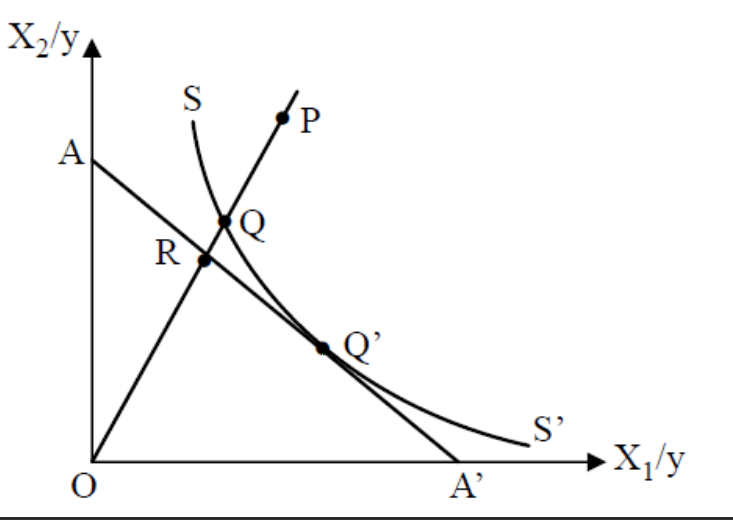The role of cognitive entrepreneurship in improving behavioral strategic decisions - an applied study in international companies operating in the Kurdistan region of Iraq
Keywords:
Cognitive entrepreneurship and behavioral strategic decisionsAbstract
This study aims to identify the role of entrepreneurial cognitive explain any behavior entrepreneur through the perceptions of cognitive psychological, social and cognitive elements such as through self-efficacy and cognitive patterns and roles in strategic decision-making from the behavioral approach. Where integrates cognitive psychology with the theory and application of strategy and knowledge biases cognitive affecting the strategic decision taken by the entrepreneurship and how to avoid these biases to achieve effective strategic decision , which is expressed as a function of the success of the organization and represents a series of stages and continuing operations aimed at achieving the objectives of the organization.
This study is trying to detect the psychological and social foundations in strategic management in order to formulate theories usually present behavioral perspective. The study attempts to study the possibility of using the cognitive entrepreneurship approach in reducing the biases inherent in strategic decisions. So we began the study by the problem expressed in a number of intellectual and practical questions, aimed at answering them elucidate the philosophy and theoretical implications of intellectual variables addressed in the study, namely, (entrepreneur cognitive - behavioral strategy). It is one of the modern topics on the Arab and Iraqi environment, and then diagnose the level of importance and impact and the possibility of their application in the companies. This study was applied to a group of international companies operating in the Kurdistan region of Iraq through a sample composed of 129 member occupy senior management positions which has been designed to collect and measure the necessary data. In order to achieve researcher effort to illustrate the effects of the variables have been dealt with theoretical concepts for the study variables and thus contributing to the formulation of the necessary tools to measure the availability of these variables in the companies under study
References
Abd. Wahab, Norazlina and Abdul Rahman, Abdul Rahim, (2012),
"Productivity growth of zakatinstitutions in Malaysia:An application of
data envelopment analysis", Studies in Economics and Finance, Vol. 29
No. 3,pp. 197-210.
Alinezhada, A., A. Makuib, and R. Kiani Mavic, (2007), "An inverse DEA
model for inputs/outputs estimationwith respect to decision maker’s
preferences: The case ofRefah bank of IRAN",Mathematical Sciences
Vol. 1, No. 1,2, pp. 61- 70.
Bartuševičienė,Ilona, and Šakalytė,Evelina, (2013),
"ORGANIZATIONAL ASSESSMENT: EFFECTIVENESS VS.
EFFICIENCY", Social Transformations in Contemporary Society, No. 1,
ISSN 2345-0126 (online).
Bojnec, Stefan, and Latruffe, Laure, (2008), " Measures of farm business
efficiency", Industrial Management & Data Systems, Vol. 108 No. 2, pp.
-270.
Bojnec, Stefan, and Latruffe, Laure, (2008), " Measures of farm
businessefficiency", Industrial Management & DataSystems, Vol. 108 No.
,p. 260.6. Diaz-Mayans, Maria Angeles and Sanchez, Rosario, (2004), "Temporary
employment andtechnical efficiency in Spain", International Journal of
Manpower, Vol. 25 No. 2,pp. 181-194.
Homayounizadpanah&Baqerkord, (2012), "Effect of Implementing
Performance Managem990ent on the Productivity, Efficiency and
Effectiveness of the Chabahar Municipal Employees", Research Journal
of Applied Sciences, Engineering and Technology 4(12), pp. 1767-1784.
Ismail,Farhana,M. ShabriAbd. Majid andRossazana Ab. Rahim, (2013),
Journal of Financial Reporting andAccounting, Vol. 11 No. 1,pp. 92-107.
Jablonsky, Josef , (2013), "Two-Stage Data Envelopment Analysis Model
withInterval Inputs and Outputs", International Journal of Trade,
Economics and Finance, Vol. 4, No. 1,pp. 55- 59.
Khisty, C. Jotin, and Laii, B. Kent, (2006), "Transportation Engineering:
an introduction", Third Edition, Prentice- Hall of India, New Delhi.
Kibe, Caroline Wanjiku, (2104), " Effects of Communication Strategies
on OrganizationalPerformance: A Case Study of Kenya Ports Authority",
European Journal of Business and Management, Vol.6, No.11, pp. 6- 10.
McKinnon, Alan C., (2009), "Benchmarking roadfreight transport:
Review of a government-sponsoredprogramme", Benchmarking: An
InternationalJournal, Vol. 16 No. 5,pp. 640-656.
Mihaiu, Diana Mariera, AlinOpreana and Marian PompiliuCristescu,
(2010), "EFFICIENCY, EFFECTIVENESS ANDPERFORMANCE OF
THE PUBLICSECTOR", Romanian Journal of Economic Forecasting,
No. 4, pp. 132-147.
Morita, Hiroshi andAvkiran,Necmi K., (2009), "S Inputs and Outputs in
Data EnvelopmentAnalysis by Designing Statistical
Experiments",Journal of the Operations ResearchSociety of Japan, Vol.
, No. 2, pp. 163-173.
Noulas,Athanasios G., (2001), "Deregulation and Operating Efficiency:
The Caseof the Greek Banks", Managerial Finance, Volume 27, Number
, pp. 35- 47.
Ogundari,Kolawole, (2010), "Estimating and analysingcost efficiency of
sawmillindustries in Nigeria: A stochastic frontier approach", China
Agricultural Economic Review, Vol. 2 No. 4,pp. 420-432.
Ramanathan, Ramakrishnan, (2004), "Business excellence of industrial
groups in oman", Measuring Business Excellence, VOL. 8, No. 4, pp. 34-
Sanjeev, Gunjan M., (2007), " Measuring efficiency of the hotel and
restaurant sector: the case of India", International Journal of
Contemporary Hospitality Management, Vol. 19 No. 5, pp. 378-387.
Talluri, Srinivas, (2000), "Data Envelopment Analysis:Models and
Extensions", Decision Line, May, Pennsylvania State University.

Downloads
Published
How to Cite
Issue
Section
License
Copyright (c) 2014 Economics and Administration College - Karbala University

This work is licensed under a Creative Commons Attribution-NonCommercial-NoDerivatives 4.0 International License.
Authors retain the copyright of their papers without restrictions.









